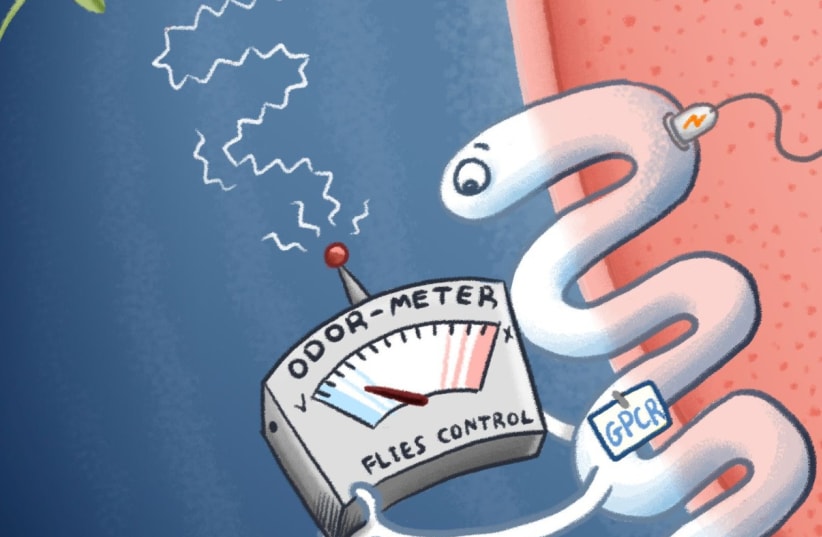In a novel study, researchers at Tel Aviv University’s Sackler Faculty of Medicine and the Sagol School of Neuroscience have discovered a direct link between changes in G-protein-coupled receptors (GPCRs) and the brain’s ability to adapt to external changes. They found that due to the brain’s mechanism, a few minutes after entering a room containing a sharp odor, we stop smelling it.
The study, published recently in Nature Communications, was conducted by Dr. Moshe Parnas and his team. It was a follow-up to one conducted by his parents about two decades ago, which focused solely on the protein level. The new study advances to the next stage.
The researchers looked at the olfactory system of the fruit fly, examining whether the voltage dependence of GPCRs is significant to brain function. They focused on one receptor from the G protein-coupled receptor family (called "Muscarinic Type A"). This protein is involved in dependence to an odor, a process in which the intensity of the reaction to the odor decreases as a result of continuous exposure to it.

"Nerve cells are able to communicate with each other – and brain flexibility is expressed in the ability of nerve cells to set up new connections with each other and change existing connections, and thus influence behavior,” Parnas said. “Muscarinic Type A protein is involved in strengthening the bond between nerve cells, and strengthening of this bond causes fruit flies to get used to the odor and indicates normal brain flexibility."
